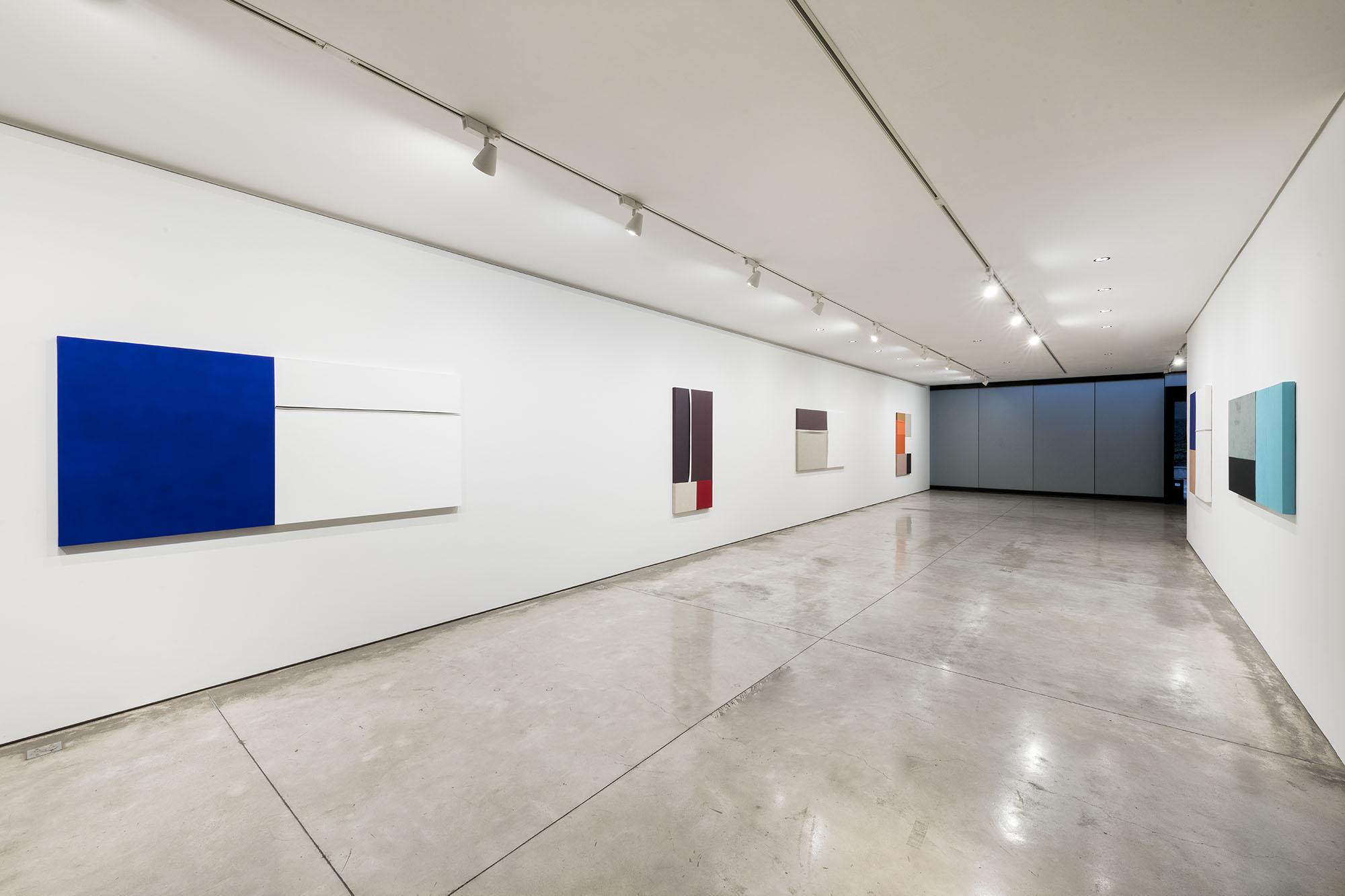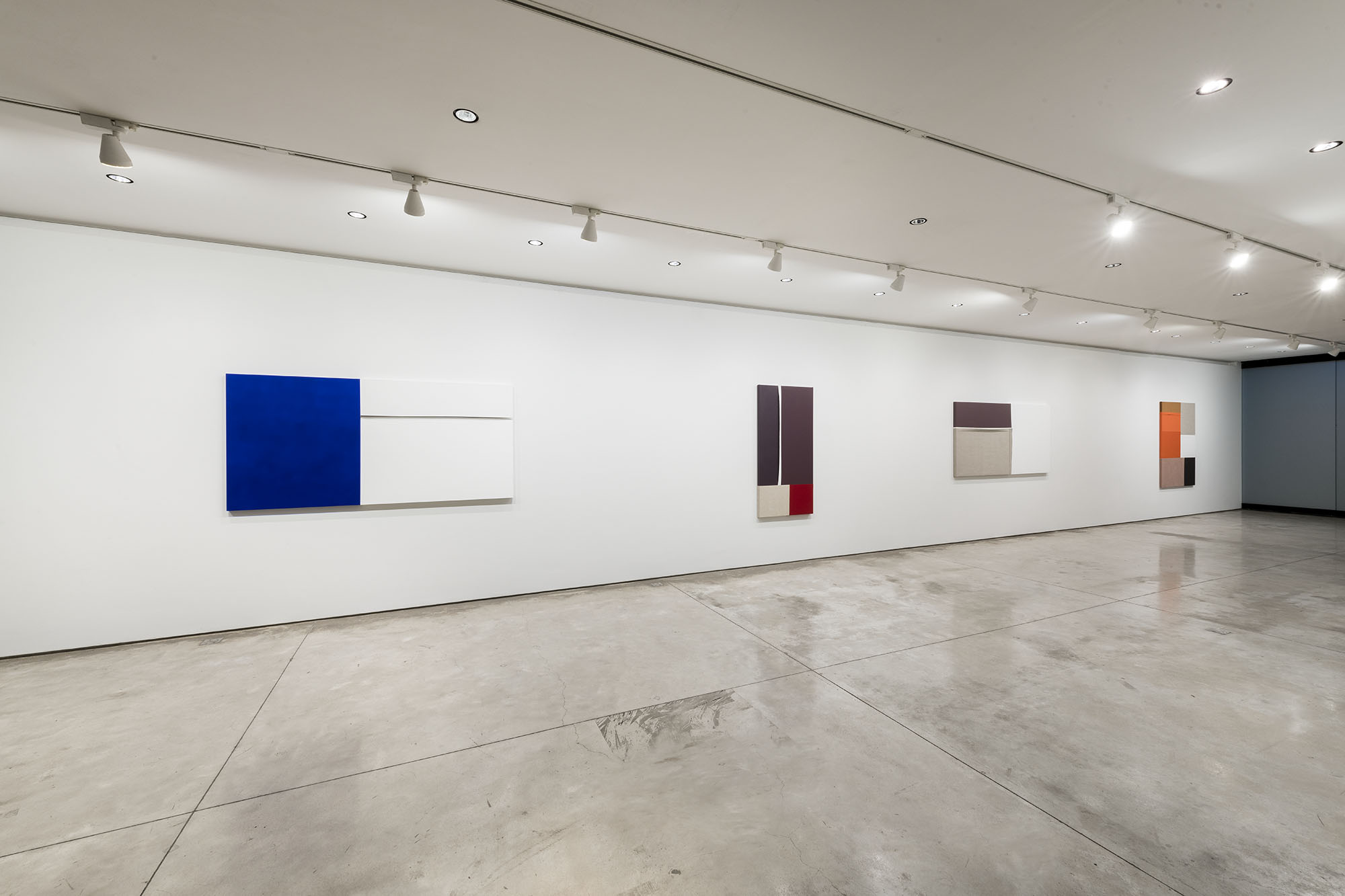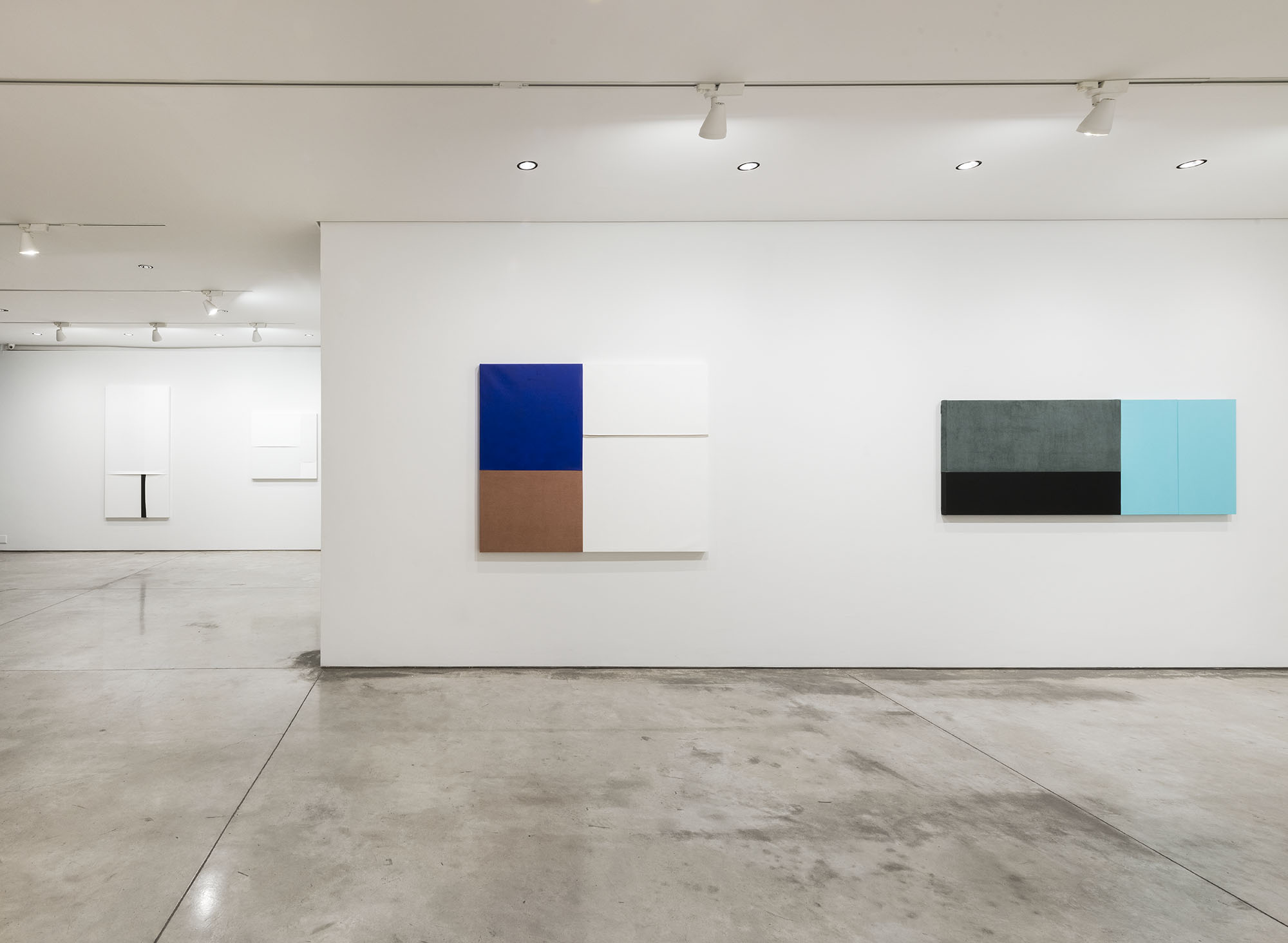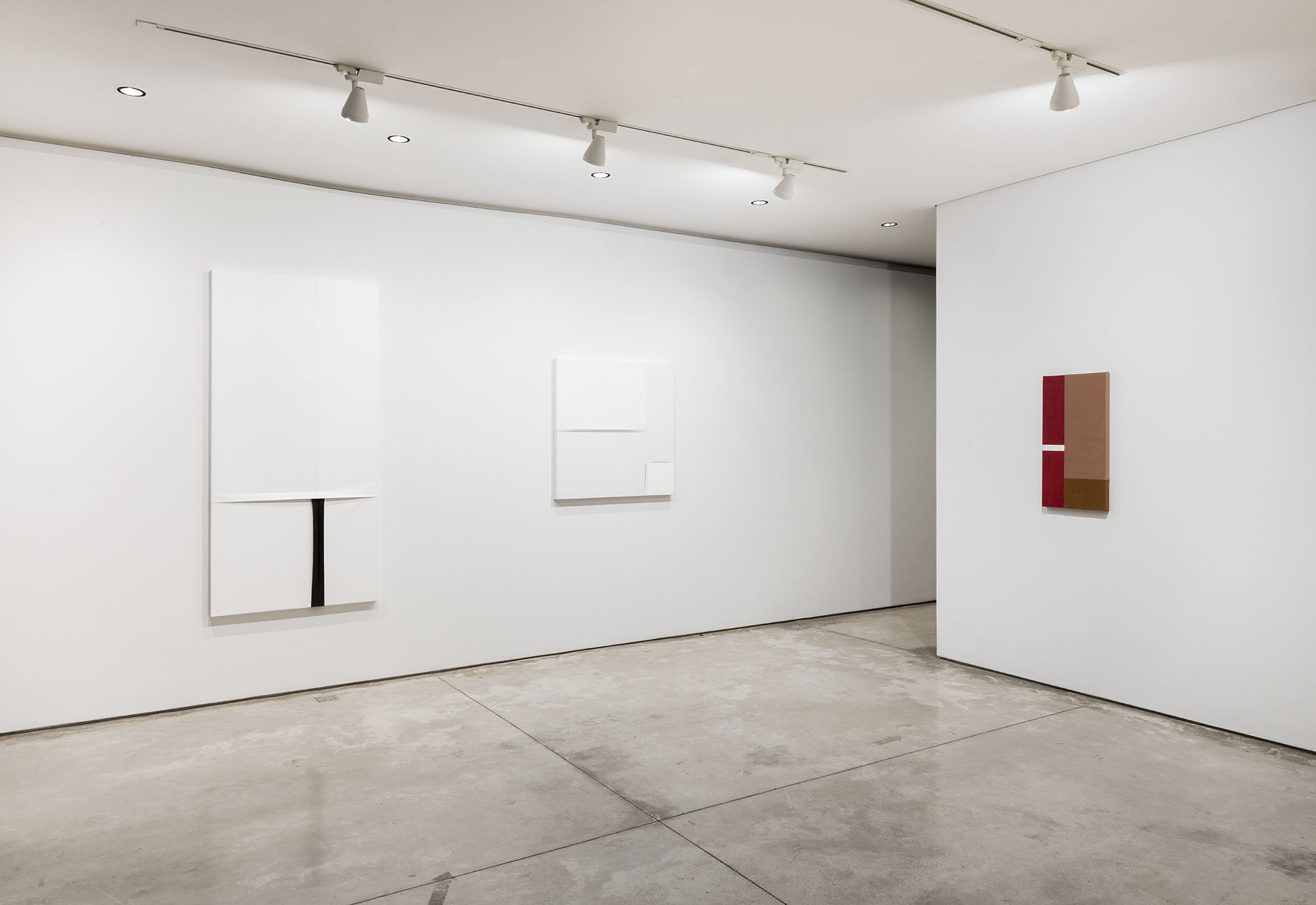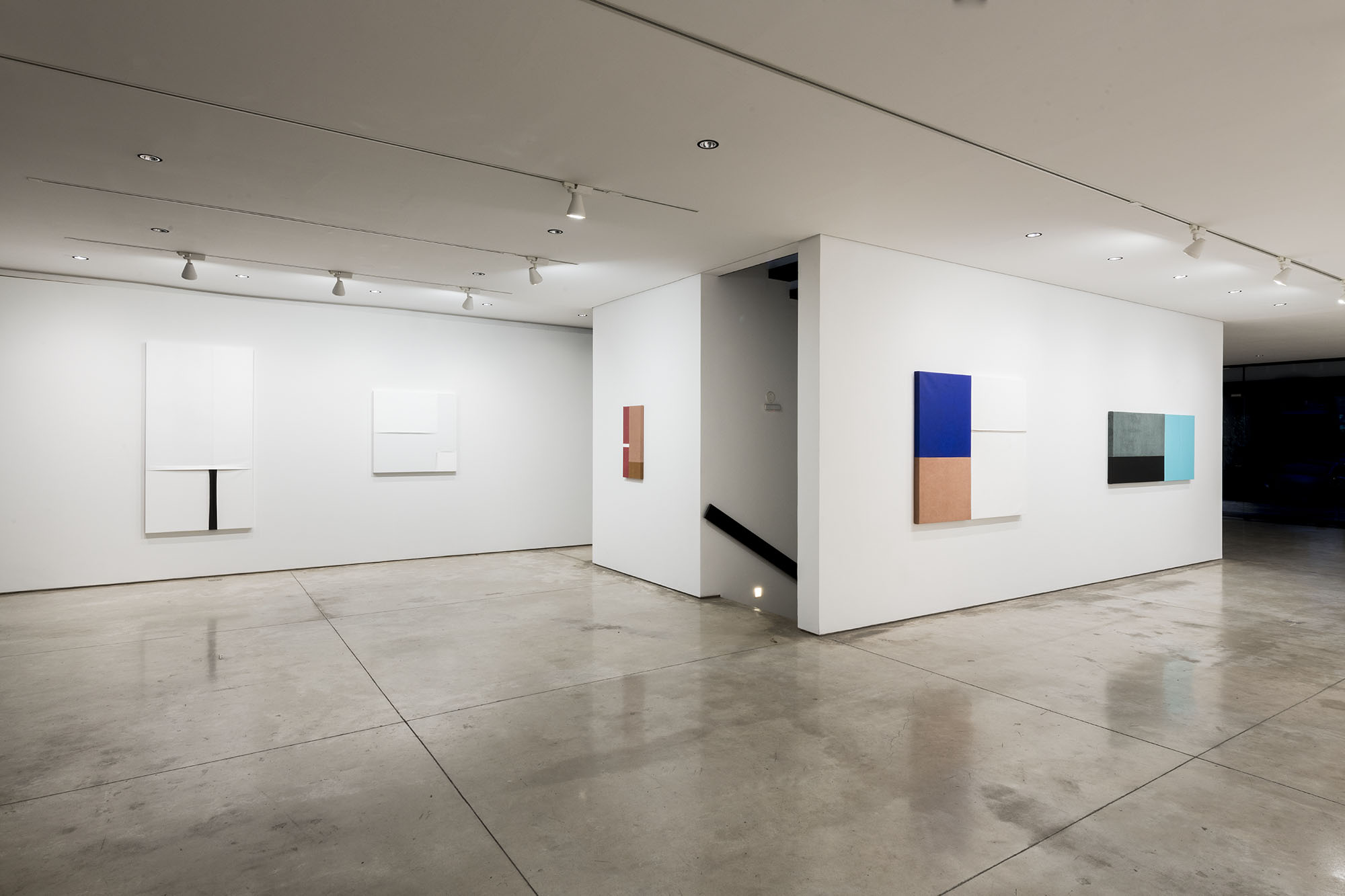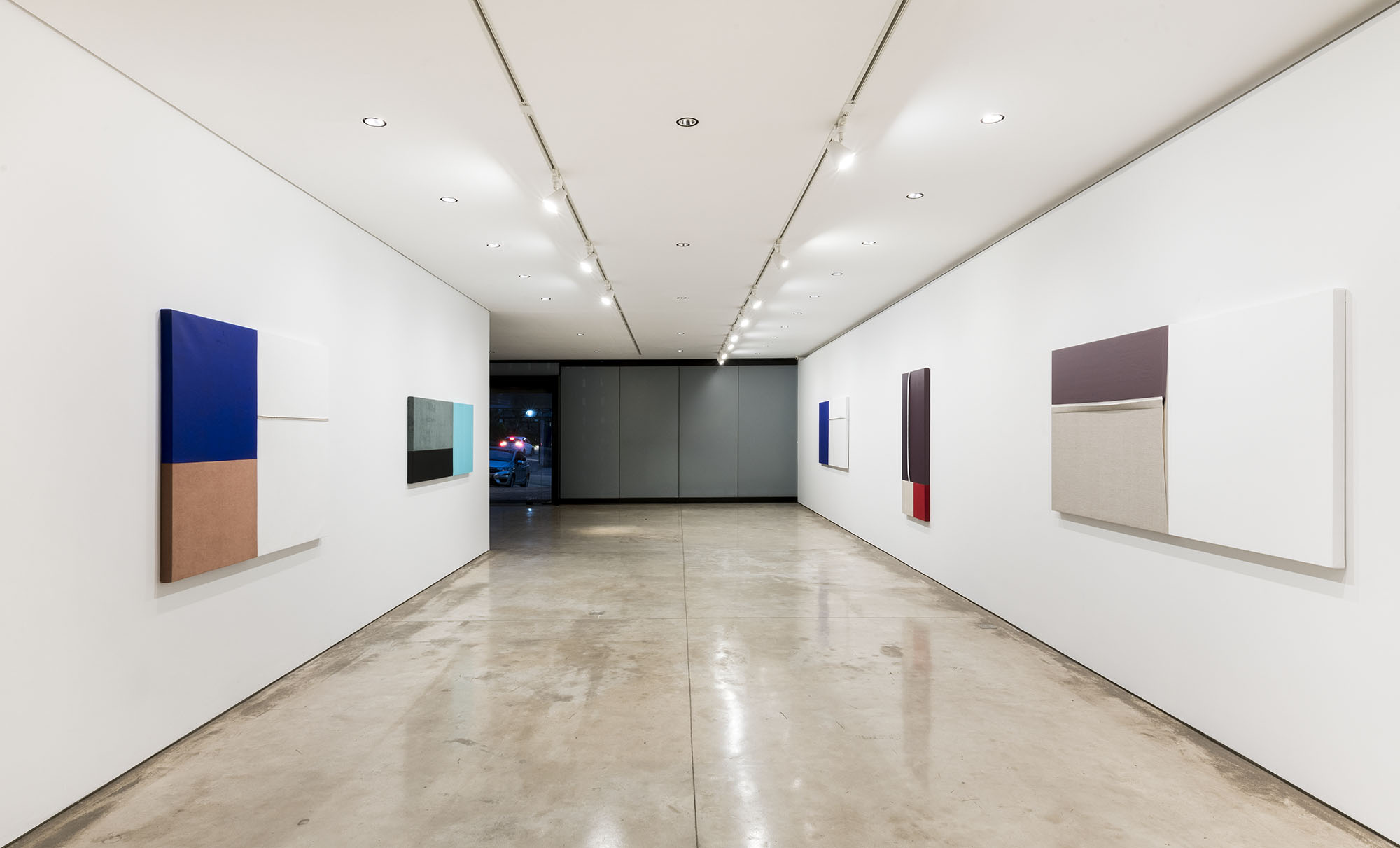elizabeth jobim_ the blooming line
set 23 - nov 04_ 2023

Instead of a single line, a stitch. In these recent paintings by Elizabeth Jobim, the planes are interconnected, brought together not by an abstract line, but by a physical mark, plainly visible as a manifest element – the interruption and separation of color planes. Here, the canvas organizes itself in the manner of an absolute two-dimensional patchwork, a construction of organized and sewn fabrics outside the frame, and as a transplantation of two-dimensional turned painting – the very skin of the painting. A skin that invites touch, the physical contact of the hand that comes from looking. Tactility, I believe, has been implicit since the artist’s earliest drawings of stones – rocks organized by hand, touched by hands. There may be an indication of the artist’s recent venture into sculpture. Blocks of pigmented cement materially fulfill this desire for solidity, infusing colors with physicality, giving color its own body. Can we then envision these fabrics as garments for bodies? The painting, imbued with the tactile malleability of various fabrics, becomes like a body manifesting itself on the surface of the canvas. At times, it appears opaquer, at others, brighter. In the detour towards sculpture, the work finds a space of longing and transformation. In retrospect, this trajectory spanning a few decades allows us to trace the evolution of these movements. The dissolution of the initial drawings and the formerly dominant blue, which persisted for a long time and structured the painting, has disappeared. I imagine that color is the material that underpins the construction of form; without it, the painting would collapse. The stitches open up and emerge from the canvas, hinting at verses that reveal an unexpected intrusion, interrupting the flatness of the pictorial surface – a blossoming of space, one might say. It’s as if the artist were unsewing or opening the zip – the vertical line, as Barnett Newman called it. The materiality of the line reveals itself; does it desire to emerge from the canvas? In some instances, especially when this line emerges vertically, I’m reminded of Fontana and his “tagli” – the cuts he made in canvases –, which here seem to unfold in reverse; the suggestion of an interior space is sutured, and the line blooms both vertically and horizontally. Notably, we find the innovative technique of sewing in the canvases of Paulo Roberto Leal in the seventies, revived and expanded upon within this context.
The elegant and intriguing combination of colors and textures breathes new life into the equation we have been exploring between the visual materiality of color and canvas. Various fabrics, often sewn alongside painted ones (it’s worth noting that canvas is also a fabric), create in each painting its own unique pattern. This marks a departure from a previous series of paintings where blue structures dominated; here, the canvas suggests a tangible space, at times even hinting at a certain architectural quality – an oscillation between flatness and dimensionality. In a sense, the stitching, when it emerges, hints at this need for a tangible space, as if the imaginary line between two planes must be accentuated and emphasized, demonstrating its material presence as an entity. You see, we return to the same initial impulse, now reactivated by this line that was previously subtly embodied. The geometric orthogonality is now more pronounced than before, eventually contrasting with the incidental emergence of the line – a fortuitous yet undeniably calculated intrusion. Also expanded and renewed is the chromatic variety from canvas to canvas. Each canvas showcases how color serves as the structuring element, further enhanced by the distinctive characteristics of diverse fabrics – their appearances, textures, and consistencies. Ultimately, we realize that these canvases hint at the often overlooked aspects of the everyday, accentuating what only the experience of painting can still perceive, indicate, and amplify.
Paulo Venancio Filho
Exhibtion: Elizabeth Jobim: A blooming line
Visiting hours: until November 04, 2023 (free entry)
Telephone 11. 3083-6322, e-mail info@raquelarnaud.com
exhibitions images
